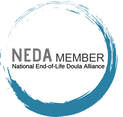|
Welcome to the latest installment of our series, "Understanding Your Funeral Options." Today, we delve into Traditional Burial, also known as Conventional Burial, a practice familiar to many across the United States. While specifics can vary based on cultural backgrounds, this option involves several key steps.
1. Selecting a Funeral Home: The initial step in planning a traditional funeral is choosing a funeral home. If you're having trouble finding one, your hospice or local hospitals may offer recommendations. Funeral homes vary in services and pricing, so it's advisable to research online or call for more information. 2. Deciding the Type of Funeral: Traditional funerals come in diverse styles, shaped by cultural, religious, and personal preferences. Determine if you prefer a religious ceremony, a secular service, or a blend of both. Always consider the wishes of the deceased and the expectations of the family. 3. Arranging the Viewing or Wake: Many traditional funerals incorporate a viewing or wake, allowing friends and family to pay their respects. Choose the date, time, and location for this event, coordinating with the funeral home for necessary arrangements. 4. Choosing the Burial Plot: Select a burial plot in a cemetery and choose a casket. Funeral homes can offer recommendations for both. Coordinate with the cemetery for the burial arrangements. 5. Planning the Funeral Service: Collaborate with the funeral director to plan the service details, such as music, readings, and eulogies. If a religious service is involved, coordinate with clergy or officiants. Decide on any cultural or traditional elements to include. 6. Notifying Friends and Family: Inform friends and family about the funeral details, including date, time, and location. Consider creating an obituary or memorial announcement for newspapers or online platforms. 7. Organizing Transportation: Arrange transportation for the deceased and mourners to and from the funeral service and burial site. Ensure all logistical details are in place. 8. Selecting Flowers and Decorations: Choose flowers and decorations for the funeral service and burial site, considering the deceased's favorite flowers or colors. 9. Planning the Reception: Following the funeral, many families host a reception or gathering for attendees. Decide on the venue, catering, and any special elements like a slideshow or memory table. While Traditional Burial offers meaningful opportunities to bid farewell, it's crucial to acknowledge its cost. This type of funeral can exceed $10,000, with most starting points at around $3,500. Establishing a budget and collaborating closely with the funeral director can help manage expenses. In conclusion, planning a traditional funeral demands careful consideration of the deceased's wishes, family traditions, and cultural or religious customs. It's a time to honor and remember a loved one, finding closure in the presence of friends and family. By following these steps and working closely with a reputable funeral home, you can ensure that the funeral is a meaningful and respectful tribute to your loved one's life.
0 Comments
Cleaning can be quite a challenge, especially when you're also responsible for the care of a sick or elderly loved one, and it can quickly become overwhelming. "Unfuck Your Habitat" by Rachel Hoffman takes a refreshingly different approach to cleaning compared to most self-help books. Hoffman provides a no-nonsense, relatable, and highly practical approach to decluttering and maintaining a clean living space.
Hoffman's book steers clear of the unrealistic expectations often associated with traditional cleaning advice. Instead, it meets you where you are, recognizing that life can be messy, and not everyone has hours to spare for cleaning and organizing. The main takeaway here is that small, manageable steps can lead to significant improvements, and this book serves as a roadmap to get you there. One of the book's standout features is its emphasis on mindfulness and self-compassion. Hoffman acknowledges that achieving a cleaner home isn't solely about scrubbing floors and folding laundry; it's also about understanding the emotional and mental aspects of clutter and chaos. By addressing the underlying issues that contribute to a messy home, readers can make lasting changes. Hoffman's insights into the emotional baggage tied to clutter are both eye-opening and reassuring. "Unfuck Your Habitat" is brimming with practical tips and tricks that anyone can put into action. The 20/10 method (20 minutes of cleaning followed by a 10-minute break) is a game-changer for those who find tidying up daunting. The book also offers guidance on creating cleaning routines tailored to your schedule and lifestyle, making it adaptable for people with busy lives. One of the book's strengths is its inclusivity. Hoffman is sensitive to the needs of people with disabilities, mental health challenges, and hectic schedules. Her advice is accessible to everyone, and she emphasizes that it's perfectly okay to seek help when needed. This inclusivity fosters a sense of community and support among readers, making the journey to a cleaner home feel less intimidating. In summary, "Unfuck Your Habitat" is a must-read for anyone seeking to declutter their lives and establish a more organized, tranquil living space. Rachel Hoffman's practical advice, coupled with her empathetic approach, makes this book a standout in the self-help genre. It's an empowering and uplifting guide that will leave you feeling motivated and equipped to tackle even the messiest of spaces, one step at a time. |
AuthorRobin Lehman Archives
April 2024
Categories |
 RSS Feed
RSS Feed


